
Tamarind Seed Powder
Shelf Life : 18
Brand Name : AFG

Tamarind Seed Gum Powder
CAS No. : NA
EINECS No. : NA
Packaging Type : Bag
Brand Name : AFG, AFG
Other Names : Tamarind Gum Powder
...more
Tamarind Kernel Powder
Galactoxyloglucan polysaccharide (55-65%), Lipids (6-10%) Proteins (18-20%) And a little amount of Fibers, Sugar etc. The white kernel obtained of tamarind seeds are utilized for producing tamarind kernel powder. Tamarind kernel is rich in protein, carbohydrates, fibers and oils. Properties of Tamarind Kernel Powder Tamarind Kernel Powder consists of D-mannose and D-galactose This Powder is odorless and is creamish white in color Moisture Content : 06 to 12 % Crude Fibre : 01 to 02 % Protein : 10 to 20 % Viscosity : 2800 CPS in 3% solution Color : light creamy pH of 5% slurry : 6.0 to 7.0 Sieve Value : 100 mesh 100% w/w passing Sieve Value : 200 mesh 99% w/w passing Sieve Value : 300 mesh 99% w/w passing Ash content : 01 to 03 % Tamarind Kernel Powder has a high water absorption capacity. And high viscosity over a broad range of pH Tamarind Kernel Powder consists of In textile industry as textile thickener and textile sizing For sizing in dyeing industry In printing industry Jute sizing Cotton wraps Paper & explosive industry Soil stabilizer. Manufacturing of plywood’s In the production of wood works Mining industry Cosmetic industry Oil drilling and gas industry Manufacturing of paints Due to its rich content of carbohydrates and protein Tamarind Kernel Powder is also used in producing adhesives Tamarind Kernel Powder is also used in various food processing industries and applied largely in Ketchups, Ice creams, sauces, sherbet, baked food, pet food, meat product and instant noodles. Tamarind kernel powder for textile industry is used for different types of dyes, fabrics and textile printing applications.
...more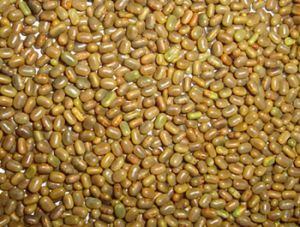
Sesbania Seed
Sesbania i.e. swamp seeds. This is very attractive species and is found growing wild mainly in southern half of Alabama. The plant is cultivated else where. This is a shrub to small tree which reaches a height of +2m. Plant grows easily from seed and makes a fantastic garden specimen. It is easily identified by its bright red flowers and 4-winged fruits. The genus name Sesbania is a latinised version of the old name “Sesban” of Arabic origin. Sesbania is a legume also known as a “Swamp Pea”. It is great for duck marshes and quail. Sesbania makes a good cover for ducks and upland game birds, growing as high as 8-12 feet. It is one of the finest quality quail foods available. Dove and wild turkey also have a craving for Sesbania. Grows best in moist, heavy lands though will grow im most soils. Cultivation of Sesbania seeds In India seeds are sown in June-July at onset of southwest monsoon; sowings after September produce poor seed production. In southern United States seed broadcast after soil has been moistened by rains in April or May and harrowed. In India seed is usually broadcast, but sometimes drilled in rows of 30cm apart. Thicker planting facilities harvest of small plants. The crop is fast growing and needs little weeding. Usually, no fertilizers are applied. In India, it is grown as main crop in rice rotation or as a border crop on the edge of rice fields. The seeds get ready to cut in September or October, but the fiber does not suffer it left standing until seed is ripe in November. In India seed matures in about 5-51 / 2 months; in the United States in about 2 months. Ripe pods normally do not suffer. In India pods are usually hand picked and threshed by beating sticks; however, if hand picking is delayed by March, some pods shatter. In the United States crop is harvested by machine and windrowed, and then threshed with an ordinary thresher. Seeds must be treated with insecticides before storing, as they are liable to damage by insects. Process for steeping and cleaning the fiber are similar to those for sunn hemp (crotalaria juncea). In India yields of seeds are about 600 / kg / ha; in Peru, 900 kg / ha; in California, 1,000 kg / ha. Fiber yields are 100-1000 kg / ha. Sesbania Seeds Biotic Factors This crop is self pollinating and requires no isolation for pure seed production. Several nematodes attack this Sesbania: Meloidogyne incognita, M. javanica, and Trichodorus minor. In southern United States, this crop usually precedes autumn planted vegetables. However, because of nematode attack, it is not recommended for growing in sandy soils with other susceptible crops, as cucurbits. Weevils and caterpillars attack seed pods, and the seeds in storage. These may be controlled with insecticides. Plants are attacked by the parasitic flowering plant, Dendrophthoe falcata. It tends to thrive in almost any soil type but prefers very moist, fertile conditions. Sesbania grows rapidly in hot weather and matures in around 90 to 100 days after emergence. Seeds are highly preferred by quail, turkey and doves. Sesbania is a vigorous, very tall annual legume that thrives in warm weather locations. The stalks of this plant reach a height of 8 to 12 feet. Sesbania is valuable as a green manure crop because of its tremendous growth. It can be ready to plow under in 8 to 12 weeks after germination. Sesbania is particularly suited for planting in orchards because it protects the young trees during hot weather, and enriches the soil at the same time. The seed color at maturity is cream colored with a smooth seed coat. The Sesbania pea is classified a non Crowder class and is primarily planted for bird feed and bird feed mixtures when harvested as a professional farm crop.
...more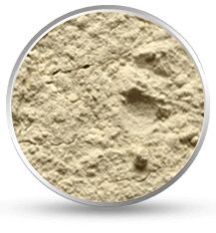
Sesbania Gum Powder
Applications of Sesbania Gum Powder Sesbania gum powder is used as sizing agents and dye thickeners in textile industries. It plays a major role as a flocculant in water and wastewater treatment. The most important use of sesbania seeds is in oil industry as it is used a blocking agent, water resistance-reduction agent and tackifier for preparing fluid cracking which results to increase in oil production rate. The sesbania gum powder is also used in incense.
...more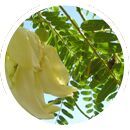
Sesbania Gum
Applications of Sesbania Gum Powder Sesbania gum powder is used as sizing agents and dye thickeners in textile industries. It plays a major role as a flocculant in water and wastewater treatment. The most important use of sesbania seeds is in oil industry as it is used a blocking agent, water resistance-reduction agent and tackifier for preparing fluid cracking which results to increase in oil production rate. The sesbania gum powder is also used in incense.
...more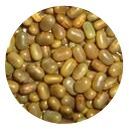
Sesbania
Sesbania i.e. swamp seeds. This is very attractive species and is found growing wild mainly in southern half of Alabama. The plant is cultivated else where. This is a shrub to small tree which reaches a height of +2m. Plant grows easily from seed and makes a fantastic garden specimen. It is easily identified by its bright red flowers and 4-winged fruits. The genus name Sesbania is a latinised version of the old name “Sesban” of Arabic origin. Sesbania is a legume also known as a “Swamp Pea”. It is great for duck marshes and quail. Sesbania makes a good cover for ducks and upland game birds, growing as high as 8-12 feet. It is one of the finest quality quail foods available. Dove and wild turkey also have a craving for Sesbania. Grows best in moist, heavy lands though will grow im most soils. In India seeds are sown in June-July at onset of southwest monsoon; sowings after September produce poor seed production. In southern United States seed broadcast after soil has been moistened by rains in April or May and harrowed. In India seed is usually broadcast, but sometimes drilled in rows of 30cm apart. Thicker planting facilities harvest of small plants. The crop is fast growing and needs little weeding. Usually, no fertilizers are applied. In India, it is grown as main crop in rice rotation or as a border crop on the edge of rice fields. The seeds get ready to cut in September or October, but the fiber does not suffer it left standing until seed is ripe in November. In India seed matures in about 5-51 / 2 months; in the United States in about 2 months. Ripe pods normally do not suffer. In India pods are usually hand picked and threshed by beating sticks; however, if hand picking is delayed by March, some pods shatter. In the United States crop is harvested by machine and windrowed, and then threshed with an ordinary thresher. Seeds must be treated with insecticides before storing, as they are liable to damage by insects. Process for steeping and cleaning the fiber are similar to those for sunn hemp (crotalaria juncea). In India yields of seeds are about 600 / kg / ha; in Peru, 900 kg / ha; in California, 1,000 kg / ha. Fiber yields are 100-1000 kg / ha. Sesbania Seeds Biotic Factors This crop is self pollinating and requires no isolation for pure seed production. Several nematodes attack this Sesbania: Meloidogyne incognita, M. javanica, and Trichodorus minor. In southern United States, this crop usually precedes autumn planted vegetables. However, because of nematode attack, it is not recommended for growing in sandy soils with other susceptible crops, as cucurbits. Weevils and caterpillars attack seed pods, and the seeds in storage. These may be controlled with insecticides. Plants are attacked by the parasitic flowering plant, Dendrophthoe falcata. It tends to thrive in almost any soil type but prefers very moist, fertile conditions. Sesbania grows rapidly in hot weather and matures in around 90 to 100 days after emergence. Seeds are highly preferred by quail, turkey and doves. Sesbania is a vigorous, very tall annual legume that thrives in warm weather locations. The stalks of this plant reach a height of 8 to 12 feet. Sesbania is valuable as a green manure crop because of its tremendous growth. It can be ready to plow under in 8 to 12 weeks after germination. Sesbania is particularly suited for planting in orchards because it protects the young trees during hot weather, and enriches the soil at the same time. The seed color at maturity is cream colored with a smooth seed coat. The Sesbania pea is classified a non Crowder class and is primarily planted for bird feed and bird feed mixtures when harvested as a professional farm crop.
...more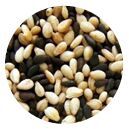
Sesame
Processor and Exporter of Sesame oil and Sesame seeds in all varieties including hulled sesame seeds, natural white sesame seeds and black sesame seeds to all the parts of the globe including Asia, US, Europe, Australia, Canada and to other premium markets. We process sesame seeds by using automated equipments for cleaning, hulling, crushing, powdering and for other processes ultimately to produce a quality oriented sesame product. Our technical experts will pay much attention in detail to retain the original nutritional values with the end product. Along with the sesame seeds, we also supply constant quality sesame paste, sesame oil and other sesame products at best possible price. More information on Sesame, its properties and technical specifications are furnished below: Natural White Sesame Seeds Sesame is a flowering plant in the genus sesamum. It is an annual plant growing to 50 to 100 cm (2-3 feet) tall. The word sesame is from Latin word “Sesamum Indicum”. The colour of seeds varies from pure black to creamy white to pure white and red. The size of the seed, its hardness, taste, color, oil content and power of resistance to pests entirely depends on the variety of seed. Generally, we import the raw sesame seeds from skilled and efficient crop cultivators within Gujarat. As these natural sesame seeds will originate from best quality soils and will be rich in proteins and minerals. Natural sesame seeds are cholesterol free and are helpful to improve the health and nourishment. Hulled Sesame Seeds Hulled sesame seeds are nothing but the sesame seeds without outer husk. We specialize in exporting hulled sesame seeds which are nutritious and rich in proteins, minerals. Before handling this hulling process, we will conduct various stages of cleaning process on the raw product. The further process is carried on ultra modern equipment ensuring germ-free and hygienic end product. Mechanically hulled sesame seeds are mostly used in breads, burgers, cereals, candies, soups and in other confectionary products. Hulled sesame seeds are rich in proteins, minerals including calcium, iron and phosphorus. These sesame seeds are useful to control the digestive system of human beings. Black Sesame Seeds Black sesame seeds are a good source for calcium as they contain heavy amounts of protein, manganese, iron, copper and phosphorus. Black sesame seeds contain sweet, neutral and strong medicinal properties and are associated with kidney and liver meridians. Black sesame seeds are mostly used as an ingredient in the food provided to patients. This helps them to recover quickly from their illness. Some beauty conscious people use these sesame seeds to keep their hair dark. Black sesame powder is mostly used on fish, salads, breads, sauces and flavoring of bakery items. We offer natural black sesame seeds which are rich in vitamin B. They can serve the rich flavors to add a dramatic garnish to your foods when sprinkled on them. As we are importing these sesame seeds directly from crop cultivators, you can expect least possible rates. Sesame oil is said to be the queen of oils with rich minerals. Sesame oil is also popular as “gingelly oil or til oil”. It is the most popular vegetable oil derived from sesame seeds. In most of the Asian countries, sesame oil is generally used for the purpose of cooking, as it is one of the best oil for nutrition. Sesame oil comes in two varieties. First variety is cold pressed by mixing the golden color and some flavor. The other variety of sesame oil is prepared from roasted oil seeds which is intensive in flavor. This second variety is most common in Asian markets. It is a raw fact that sesame oil has a longer shelf life and is highly resistant to rancidity. Best for cooking, body massage, hair treatment, food manufacture, drug manufacture and for other industrial uses.
...more
Pysllium Husk Powder
Certification : HACCP, ISO, KOSHER, Halal
Type : Emulsifiers, Nutrition Enhancers, Stabilizers, Sweeteners, Thickeners

PSYLLIUM SEED HUSK POWDER
Brand Name : AFG
Certification : HACCP, ISO, KOSHER, Halal
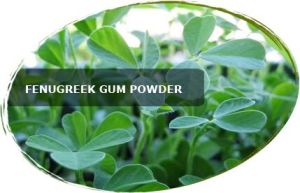
Psyllium Husk Powder
The properties of Psyllium Husk Lowers cholesterol level in blood Natural laxative Curing agent for peptic ulcers Constipation Piles Acidity and ulcers For slimming purposes For diarrhea, dysentery and other bowel disorders The Nutritional Value of Psyllium Husk consist of Proteins Vitamin B1 Choline Glycosides Polysaccharides
...more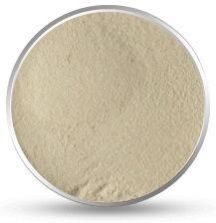
Psyllium Husk and Powder
Psyllium is obtained from plantage ovate or Psyllium plant. Psyllium plant grows in the region which has good exposure to sunlight, and the soils are well drained and sandy. This is an annual crop cultivated largely in Gujarat and in some parts of Rajasthan and Madhya Pradesh. The Botanical name of Psyllium husk is Plantago Ovata, and it is better known as Isabgol in India. Psyllium is mucilage having a combination of xylose, aucubin, galacturonic, arabinose, semi drying fatty oils. Psyllium husk derived from bent layers are extracted from dried ripe seeds of plantago ovata frosk. The Psyllium husks are thoroughly cleaned and sorted from anti farm fibers, mud, iron particles, dust, particles, stones and other waste products. They are then graded, taking their scientific values into account. The Psyllium husk seeds are been processed and forms the Psyllium husk powder. Psyllium husk powder are sorted with the help of these grades. Psyllium consists of 80% water soluble fiber. Psyllium mucilage has a viscosity which is undeterred with 68 degrees F to 122 degrees F, by pH ranging from 2 to 10 and by sodium chloride up to 0.15 m. he Nutritional Value of Psyllium Husk consist of Proteins Vitamin B1 Choline Glycosides Polysaccharides Psyllium husk and powder are used as horse feeds as they prevent the accumulation of sand or stones in animals without any side effects. Psyllium husk and powder are also used in pharmaceutical industries while manufacturing tablets as it acts as a thickening agent. Psyllium husk powder is also used in food processing industries like in ice creams, rice, jams, cakes, biscuits, breads and instant noodles. Generally, Psyllium husk powder is been treated as laxative, i.e. a food additive that stimulates bowel movement and helps in facilitating the excretory system. The Psyllium husk plays a great role as a dietary fiber and is helpful in various medical conditions like constipation, diabetes, irritable bowel syndrome, diarrhea and many more. Applications of Psyllium Husk Powder in Industries In medical industries, it is widely been used as a bulk-forming laxative. It is mainly been recommended for the treatment of diarrhea & constipation due to its high soluble fiber content. In the food industry, Psyllium husk powder is used as a thickening agent in ice cream and other desserts. Due to its natural fiber characteristics, it helps to improve the fiber content of the food like bread, biscuits, beverages, health drinks etc. Psyllium husk powder can also be added to fresh fruit drinks that makes the feel and good consistency of the drink. The Psyllium husk is also been used in the prevention of landscaping, soil erosion and is also used in animal feed that gives high fiber content to animals
...more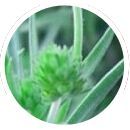
Psyllium Husk
Psyllium is obtained from plantage ovate or Psyllium plant. Psyllium plant grows in the region which has good exposure to sunlight, and the soils are well drained and sandy. This is an annual crop cultivated largely in Gujarat and in some parts of Rajasthan and Madhya Pradesh. The Botanical name of Psyllium husk is Plantago Ovata, and it is better known as Isabgol in India. Psyllium is mucilage having a combination of xylose, aucubin, galacturonic, arabinose, semi drying fatty oils. Psyllium husk derived from bent layers are extracted from dried ripe seeds of plantago ovata frosk. The Psyllium husks are thoroughly cleaned and sorted from anti farm fibers, mud, iron particles, dust, particles, stones and other waste products. They are then graded, taking their scientific values into account. Psyllium husk powder are sorted with the help of these grades. Psyllium consists of 80% water soluble fiber. Psyllium mucilage has a viscosity which is undeterred with 68 degrees F to 122 degrees F, by pH ranging from 2 to 10 and by sodium chloride up to 0.15 m. The properties of Psyllium Husk Lowers cholesterol level in blood Natural laxative Curing agent for peptic ulcers Constipation Piles Acidity and ulcers For slimming purposes For diarrhea, dysentery and other bowel disorders
...more
Pallet of De Oil Meal
Once the oil is extracted from sources like cottonseeds, sunflower seeds, guar seeds, rapeseeds etc the left over by product obtained is a de oil meal. This de oil meal is generally very low in fat and a good source of proteins making it ideal for use as animal feedstuffs. The pallets of de oil meals are most widely used for feeding cattle, poultry etc. However the pallets of de oil rice bran meals are the prime sources of food for cattle, poultry and fish.
...more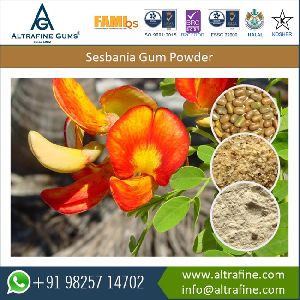
Organic Sesbania Gum Powder
Color : Off White Powder
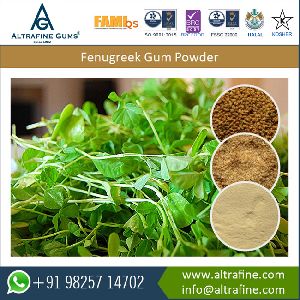
Organic Fenugreek Gum
Type : Emulsifiers, Stabilizers, Thickeners

Oil Cake Meal
The solid residue that is left after certain oily seeds, such as cottonseed, rapeseed etc., have been pressed free of their oil is called oil cake. It is ground and used as cattle feed. The oil cake meal of rice bran pallet is good nutritive food supplement used for cattle feeds, poultry feeds and fish feeds. The oil cake meal is good source of proteins and has less fat content and therefore offer good nutritive diet for animals.
...more
Obovata Cassia Gum Powder
Brand Name : Altrafine Gums
MF : Cassia Gum
EINECS No. : 234-299-6
Other Names : Galactomannan
CAS No. : 11078-30-1
...more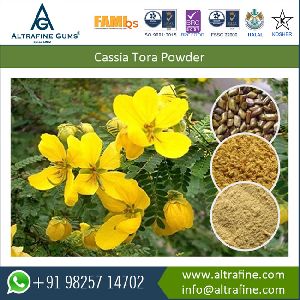
Nutritional Supplements Cassia Gum Tora Powder
Brand Name : Altrafine Gums
EINECS No. : 234-299-6
Certification : CE Certified Company
MF : Cassia Gum
Type : Emulsifiers, Flavoring Agents, Stabilizers, Thickeners, Gelling Agents
...more
Mustard Seed
Mustard seeds are also known as rapeseeds. Mustard seeds are the smallest seeds of the various mustard plants. The seeds are about 2mm in diameter and come in yellowish with to black. French have used mustard seeds as a spice since 800 AD, and it was amongst spices taken by the Spanish on explorations throughout the 1400s. Mustard is highly used in a variety of Indian pickles consisting of mangoes and aavalu powdered mustard and it is very popular in South India. There are many varieties of mustard which come in a wide range of strengths and flavors. The basic taste and heat of the mustard is largely determined by seed type, preparation and ingredients. Black seed mustard is generally regarded as the hottest type. In India, mustard is known both as oil seed as well as spice. Internationally, however, it is more popular as a spice. The genus Brassica consists of over 150 species of annual or biennial herbs several of which are cultivated as oil seed crops like mustard. Other oil seed crops in genus are toria and rapeseed. There are many others, which are cultivated mainly as vegetable like cabbage, collies flower, turnip etc. There are many other, which are being grown as fodder. The mustard seeds of only the above four species have condiment value. The oil yielding Brassicas that are predominantly cross pollinated, constitute a group about which considerable confusion exists, regarding their identification and nomenclature. The mustard flour of commerce is a mixture of the flours of two types of mustard seeds; brown or black mustard (nigra) and white mustard (alba). Mustard condimental properties are largely due to the essential principles of these two seeds. The essential principle or volatile oil of the brown mustard is allyl isothiocyanate, while that of white or yellow mustard is acrimyl isothiocyanate. The essential principles are not present as such in the seeds of brown and white mustards but are produced as a result of hydrolysis of their respective glycosides, sinigrin – potassium myronate and sinalbin, by the action of enzyme myrosin, in the presence of moisture under suitable conditions. Mustard seeds are sold either whole or as a ground powder. Nutritional Profile of Mustard Seeds Mustard seeds are a very good source of selenium and omega-3 fatty acids. They are also a good source of phosphorus, magnesium, manganese, dietary fiber, iron, calcium, protein, niacin and zinc. Cultivation of Mustard The black mustard seed grows throughout Europe, except in the north eastern parts, also in South Siberia, Asia Minor and Northern Africa, and is naturalized in North and South America. It is largely cultivated in England, Holland, Italy, Germany and elsewhere for the sake of the seed, used partly as a condiment, and partly for its oil. Mustard seeds generally take 3 to 10 days to germinate if placed under the proper conditions, which include a cold atmosphere and relatively moist soil. Mature mustard plants grow into shrubs. Mustard grows well in temperature regions. Major producers of mustard seeds include Hungary, Great Britain, India, Canada and the United States. Brown and black mustard seeds return higher yields than their yellow counterparts. Botanical names: Brassica nigra Koch Brassica alba Linn. Brassica hirta Linn Brassica juncea (Linn) Czernjajev. Family names: Crucifereae. English names: True mustard or Black mustard. White mustard, India mustard or Brown mustard. Mustard Oil The seeds yield 23 to 33% of the fixed oil. The volatile oil of mustard is obtained in a yield of 0.7 to 1.2% after the hydrolysis of the glucoside sinigrin, by the enzyme myrosin. Mustard oil for the preparation of volatile oil, the fixed oil is first expressed from the seeds, which are subsequently macerated with tepid warm water for several hours, and steam distilled. The oil obtained is an extremely powerful irritant owing to its volatility and penetrating power, and is responsible for the painful nature of alcohol, or in the Black mustard is ground with white mustard for preparing table mustard and also various medicinal preparations, such as bath mustard, mustard bran and mustard flour. The expressed oil has mild rubefacient properties and is used as a liniment. The technical oil obtained during the preparation of mustard also contains the oil from white mustard seeds. In India seeds of black mustard are used in pickles and curries. Brassica juncea or Indian mustard is a self fertile species, and is a very variable annual. Its narrow based leaves are not stem clasping like those of toria and sarson. Rai matures later than either. The mustard seeds are rugose, reddish brown and generally smaller.
...more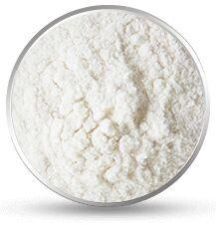
Locust Bean Gum Powder
Bean Plants are of different varieties and beans seeds obtained from different bean plants have exclusive properties that make it applicable in several industrial applications. Locust bean is one among the bean types that possess high stabilizing property. Also known as Carob Bean and the botanical name of the locust bean tree is Ceratonia Sillisqud, Locust is a naturally available bean seed from Carob Tree. Carob trees are mainly grown in Mediterranean regions. Powder Bean Gum Derived from Locust Bean Locust bean gum derived from the seeds of locust bean. It is obtained through a series of several processes such as crushing the seeds, filtering the crushed seeds and then the endosperm present in the seeds is removed separately by grinding process. Later on the endosperm obtained from the bean seeds will be processed to get gum powder and then finally packed. Properties of Locust Bean Gum Locust bean gum powder contains the following properties, Moisture controlling agent Viscous agent Stabilizer Thickening agent Improves Elasticity Texture modifier, etc These properties keep this derivative suitable for several industrial applications. However, though other types of gum powders are also available as viscous agents, the main difference in the application of Locust bean gum is that it gives out complete viscosity when applied after dispersing the gum powder in water. Industrial Applications The thickening and viscous property make this product stay suitable for several manufacturing industries and some of the important industrial applications of Locust extract are, Food Industry- It is used in food processing industry to thicken food products such as ice creams, cheese condiments, bakery products, baby foods, desserts, sausages, salads, fruit extract syrup, etc. Cosmetic Industries- Cosmetic product production finds locust gum powder to be a best ingredient in making lotion, creams, etc. Pet food- Locust gum powder is applied as a thickening agent in pet food production. It is considered as an important ingredient for the same. Significant Applications of Locust Gum Product Textile Printing-Textile industry applies locust seed powder as an important ingredient and sizing agent that helps to maintain the texture of natural fabrics. In addition, textile printing technology also make of locust product as a thickener of printing paste. This ingredient helps in obtaining the colouring in perfect and natural shade over the fabric. In addition, printing on the fabric penetrated deeply into the fabric which also avoids the print to spread outside the preferred area. Health Advantages of Locust Seed Extract Locust bean gum powder tastes similar to that of cocoa and many food industries which prepare special food items for diet conscious and diabetic people prefer this product as an alternative for cocoa. Hence, food recipes that contain cocoa as an ingredient apply locust extract as an alternative. This gum powder contains good quantity of natural fibre hence; it is also preferred as an alternative to reduce fat content. Food products containing Locus extract as a sweetener stays best for diabetic. Locust beans when added as alternative sweetener reduces the caloric value also.
...more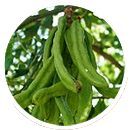
Locust Bean Gum
Locust bean gum derived from the seeds of locust bean. It is obtained through a series of several processes such as crushing the seeds, filtering the crushed seeds and then the endosperm present in the seeds is removed separately by grinding process. Later on the endosperm obtained from the bean seeds will be processed to get gum powder and then finally packed. Locust bean gum powder contains the following properties, Moisture controlling agent Viscous agent Stabilizer Thickening agent Improves Elasticity Texture modifier, etc Industrial Applications The thickening and viscous property make this product stay suitable for several manufacturing industries and some of the important industrial applications of Locust extract are, Food Industry-It is used in food processing industry to thicken food products such as ice creams, cheese condiments, bakery products, baby foods, desserts, sausages, salads, fruit extract syrup, etc. Cosmetic Industries- Cosmetic product production finds locust gum powder to be a best ingredient in making lotion, creams, etc. Pet food- Locust gum powder is applied as a thickening agent in pet food production. It is considered as an important ingredient for the same.
...more
Locust Bean
Locust bean gum powder contains the following properties, Moisture controlling agent Viscous agent Stabilizer Thickening agent Improves Elasticity Texture modifier, etc
...more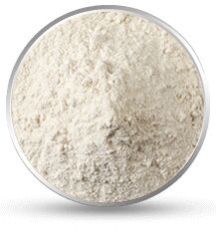
Kappa Carrageenan Gum Powder
Carrageenan is an extracted product from plant tissue and there are different types of gelling agent formed with it and kappa is one among them. Kappa Carrageenan has pure gelling property that is found to be greatly suitable for food production industry. Kappa is a compatible gelling agent that can work out efficiently on boiling and cold industrial productions. It is also agood stabilizing agent that can control the structure of water molecules. It was used as a prime component used in pudding preparation since the time it had been in use in places like Hawaii. Carrageenan extracts from red such as girgartinaceae, hypaneaceae, etc have been identified to produce gelling,stabilizing and viscous properties. They are used for commercial purpose for their properties. The extraction of gum from these is a long process. The are dried first and washed perfectly and then sent to alkaline extraction process to separate the natural ingredient from the extract. Kappa Carrageenan is a specific extract from a red algae calledkappaphycus alvarezii wherein, it belongs to the carrageenan algae family and also a commercial source. This particular sea is dissolved into an aqueous liquid and pure kappa is obtained by filtering the other materials stick to it. Application in Food Industry Kappa carrageenan is synergistically compatible with other gum products to produce gelling effect. It is mostly applied to obtain breakable gels such as in the production of dairy based fluid products. However, it forms into fragile gel only when additional component is added to it such as the calcium and potassium salts. Hence, the liquid form of ingredients which need to transform into gel like substance, should possess calcium or potassium. In combination with Locust Bean Gum, Kappa gum can show improved gelling property and develops elasticity as well. In addition, kappa gum can be used as an alternative for eggs also hence; it is applied in combination with starch to make egg-less food products. It acts as a powerful stabilizer to get a smooth final touch in several milk based products such as cheese, ice cream, etc. Kappa Carrageenan when combined with clarified locust bean gum can work out as a good gel and gets the appearance of gelatine. This property helps to used kappa gum as an alternative to gelatine. There are several tests done to further study the properties of kappa gum in combination with other gum products. Carrageenan has several advantageous properties they are, Solubility- Kappa contains good solubility property which makes this gum applicable for making variety of food products. It is soluble in both hot and cold water, however; when mixed with calcium salts it loses its solubility property. Kappa is soluble in hot milk to some extent as the presence of calcium ion prevents this property. Gelling Agent-When mixed with potassium salts kappa forms into brittle gel however; presence of more potassium salts will make the get weaker. It also works as a good stabilizing agent in food processing industry.
...moreBe first to Rate
Rate ThisOpening Hours